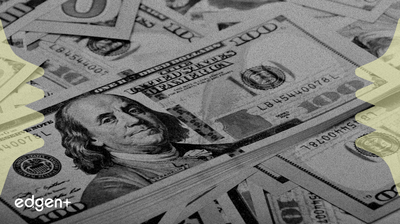Related News

Robinhood Considers Bitcoin Treasury Amid Surging Crypto Revenue
## Executive Summary **Robinhood Markets, Inc.** is evaluating the adoption of a Bitcoin corporate treasury, a decision under consideration by its finance leadership. This potential move follows the firm's significant 300% surge in crypto revenue during the third quarter. ## The Event in Detail **Robinhood** is exploring the addition of **Bitcoin** to its corporate treasury, a strategy that its SVP of finance and strategy and incoming CFO, **Shiv Verma**, noted could demonstrate alignment with the crypto community. Ms. Verma emphasized that while this move has positives, it also necessitates a considerable capital commitment. Shareholders currently have the option to purchase **Bitcoin** directly through the **Robinhood** platform. The company's crypto revenue reached **$268 million** in the third quarter, representing a 300% increase, contributing to overall revenues of **$1.27 billion** for the period. This marks the highest crypto trading revenue to date for **Robinhood**, with overall profits also climbing 217% to **$556 million**. ## Market Implications **Robinhood**'s consideration of a **Bitcoin** treasury aligns with an emerging trend among publicly traded corporations. According to **Elliot Chun** from **Architect Partners**, 228 publicly traded companies have announced digital asset treasury (DAT) strategies, with the majority initiated in 2025. These firms have collectively allocated **$148 billion** into crypto assets, driven by the belief that such holdings can enhance stock value, mirroring the strategy of companies like **MicroStrategy**. For instance, **The Smarter Web Company**, a London-listed tech firm, has consistently expanded its **Bitcoin** holdings as part of a long-term treasury plan. Despite market fluctuations, **Smarter Web** reported a Quarter-to-Date **Bitcoin** yield of 1.74% on its treasury, demonstrating potential for income generation. Such corporate adoption could positively influence broader market sentiment by signaling increased institutional engagement with digital assets, potentially encouraging other companies to explore similar strategies. ## Expert Commentary Experts highlight inherent risks associated with corporate holdings of volatile assets such as **Bitcoin**. Cryptocurrencies remain speculative, with values susceptible to rapid fluctuations driven by news or regulatory announcements. For example, **Bitcoin** experienced a 12% decline in value in March 2025 following new U.S. regulatory announcements. The absence of a standardized global legal framework presents legal and fiscal risks, particularly in jurisdictions with ambiguous regulations. Security concerns also persist, with over **$1.5 billion** in losses due to hacks in 2024, affecting wallets and platforms. The proliferation of new cryptocurrencies and NFTs has also led to an increase in fraudulent schemes such as Rug pulls and Ponzi schemes. ## Broader Context Corporate digital asset treasuries predominantly favor **Bitcoin**, which constitutes 82.6% of DAT company treasuries. In 2025, DAT companies acquired approximately **$30.0 billion** in **BTC**, representing 70.3% of their total digital asset allocations. **Ethereum (ETH)** purchases totaled at least **$7.9 billion**. Regulatory landscapes are also evolving, with the U.S. Congress making progress in 2025 toward federal oversight of stablecoins and digital asset markets. The **GENIUS Act** was signed into law, and other significant bills, including the **CLARITY Act** and the **Anti-CBDC Surveillance State Act**, have advanced through the House. **Robinhood** has also expanded its crypto footprint, completing the acquisition of **Bitstamp** in June 2025, a regulated crypto exchange operating in over 50 countries, further broadening **Robinhood**'s international reach and access to digital assets.

Fed's Dovish Stance Amidst Rising Debt Fuels Dalio's Asset Bubble Warning, Bolstering Bitcoin and Gold Appeal
## Executive Summary The Federal Reserve’s recent monetary policy adjustments, including a 25 basis point interest rate cut in October and forecasted further reductions, are prompting warnings from prominent financial figures like Ray Dalio. Dalio asserts that this easing, occurring amidst low unemployment and elevated asset markets, signals a late-stage economic cycle characterized by excessive debt, which could lead to an asset bubble and currency debasement. This macroeconomic backdrop is bolstering the appeal of **Bitcoin (BTC)**, gold, and other hard assets as investors seek hedges against potential inflation and economic instability. ## The Event in Detail Federal Reserve Governor Steven Miran has publicly endorsed continued interest rate cuts, indicating strong internal support for an accommodative monetary policy. Following a 25 basis point reduction in October, which set the federal funds rate target to an anticipated 3.75%-4.00%, additional cuts are forecasted for December. These decisions are being made in response to weakening employment data and persistent inflation pressures, which remain above the Fed's long-term 2% goal. This dovish stance is expected to exert downward pressure on the **U.S. dollar**, potentially increasing the attractiveness of cryptocurrencies as a hedge against fiat depreciation. ## Market Implications The ongoing monetary easing is widely anticipated to support risk assets, driving investors towards alternative and growth-oriented assets. Andrew Forson, president of DeFi Technologies, noted that lower rates have historically supported digital assets and expects this trend to continue, viewing the environment as broadly positive for crypto. This sentiment is underscored by a surge in digital asset treasury holdings, which reached **$137.3 billion** by October, with **$42.7 billion** invested in new crypto acquisitions this year, 70.3% of which was allocated to **Bitcoin**. Hedy Wang, CEO and co-founder of Block Street, highlighted that traditional bonds are losing their defensive value and cash offers no protection against currency depreciation, leading to renewed demand for tangible stores of value such as gold, silver, and increasingly, digital assets like **Bitcoin**. ## Expert Commentary Ray Dalio, founder of Bridgewater Associates, has voiced significant concerns regarding the Fed's current trajectory. He describes the policy shift as a "dangerous cycle of stimulating into a bubble," warning that the U.S. faces a "debt-induced heart attack" by 2027. This projection is based on a **$37.3 trillion** national debt and annual interest payments nearing **$1 trillion**. Dalio suggests that this monetary stress could lead to a speculative "melt-up" in assets like gold and **Bitcoin** before a potential sharp collapse. He advocates for substantial allocations to hard assets, recommending 15% **Bitcoin**/**gold** allocations and 60-70% barbell strategies prioritizing **Bitcoin** and **Ethereum (ETH)** for macroeconomic protection. ## Broader Context The current economic environment is characterized by modest growth at 2%, unemployment at 4.3%, and inflation running over 3%. The Fed's policy easing during a period of low unemployment and rising asset markets is considered typical of late-stage economies. Historically, **Bitcoin's** price has closely mirrored the Federal Reserve’s monetary policy cycles. During easing phases, such as the 2020–2021 period of zero rates and quantitative easing, abundant liquidity and a weaker dollar fueled massive inflows into **Bitcoin**, propelling its price from under $10,000 to record highs. This reinforces **Bitcoin's** "digital gold" narrative as a hedge against inflation and currency debasement in periods of loose monetary policy.

Ray Dalio Warns Fed Policy Risks Asset Bubble, Poising Bitcoin and Gold for Gains
## The Event in Detail Billionaire investor Ray Dalio has issued a cautionary statement regarding the Federal Reserve's recent monetary policy adjustments, characterizing the halt of quantitative tightening as the commencement of a "dangerous cycle of stimulating into a bubble." Dalio, the founder of Bridgewater Associates, argues that this shift represents a classic dynamic of a late-stage debt cycle, a period marked by easing monetary policy despite economic growth, low unemployment, and rising asset markets. He contends that this approach, rather than addressing economic weakness, could inflate asset prices significantly before an eventual market correction. Dalio suggests that the Fed's current stance is particularly concerning given the prevailing economic conditions. Historically, monetary easing is implemented during economic downturns; however, the present environment features robust employment figures and appreciating asset valuations. This combination, according to Dalio, contributes to an inflationary environment and currency debasement, making it a critical period for investors to monitor fiscal and monetary policy decisions. ## Market Implications The implications of the Fed's perceived "stimulating into a bubble" policy extend to hard assets, with **Bitcoin** (BTC) and **gold** identified as primary beneficiaries. Dalio posits that these assets could experience substantial rallies, acting as hedges against the potential inflation and economic instability arising from late-stage debt cycle dynamics. Gold, specifically, has already demonstrated resilience, trading comfortably above **$4,000/oz**. The **World Gold Council’s Q3 2025** report noted a 3% year-over-year increase in demand, totaling **1,313 tons**, with 13 new all-time highs recorded and central bank purchases up 10% year-over-year. This demand is further bolstered by resumed purchases from nations like Poland and Brazil. For the cryptocurrency market, **Bitcoin** (BTC) is viewed as a significant hedge against macroeconomic and geopolitical risks, including potential shifts in the global monetary order. While Dalio suggests an interim "melt-up" for Bitcoin alongside gold, he also cautions about potential volatile reversals should liquidity or policy expectations change. The broader crypto market recently experienced volatility, with investment products witnessing **$360 million** in outflows, driven by investor uncertainty following Federal Reserve Chair Jerome Powell's cautious comments on future rate cuts. **Bitcoin ETFs** specifically saw **$946 million** in redemptions, indicating a cautious investor sentiment for certain crypto instruments. Conversely, **Solana** (SOL) attracted significant inflows, reaching **$421 million**, largely due to demand for newly launched US exchange-traded funds, pushing its year-to-date totals to **$3.3 billion**. **Ethereum** (ETH) also recorded **$57.6 million** in inflows, albeit with mixed daily activity. ## Broader Context The demand for **Bitcoin** (BTC) as a store of value is further amplified by growing U.S. macroeconomic imbalances, notably persistent fiscal deficits. The U.S. House of Representatives passing the “One Big Beautiful Bill Act” (OBBBA) on May 22, 2025, is estimated to add **$3 trillion** to the federal deficit over ten years, potentially increasing to **$5 trillion** if certain expiring provisions are extended. This fiscal trajectory contributed to Moody's downgrading the U.S. sovereign credit rating to double-A from triple-A on May 16. Such fiscal risks are increasingly driving demand for **Bitcoin**, including its adoption by "Bitcoin treasury" corporations—public companies incorporating Bitcoin onto their balance sheets as a strategic asset.
